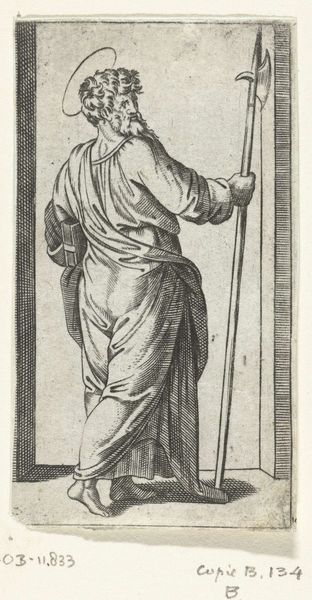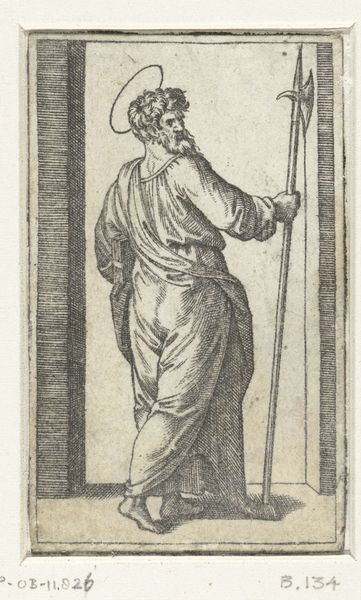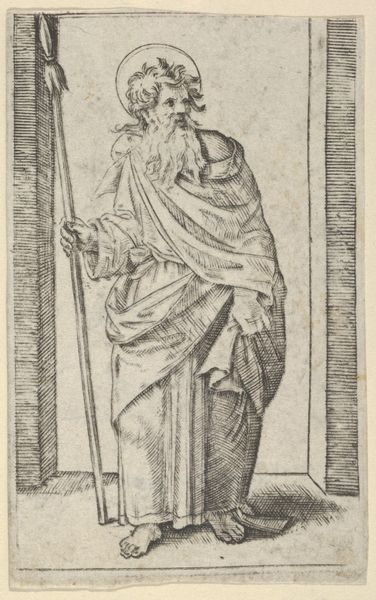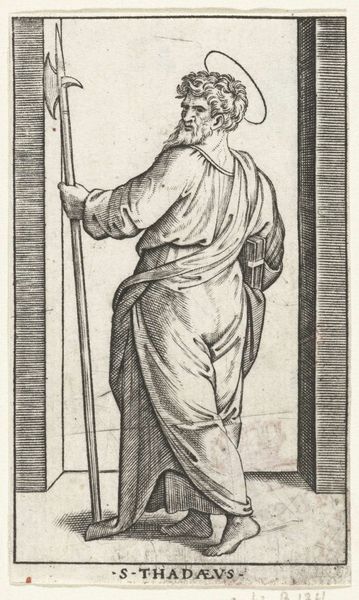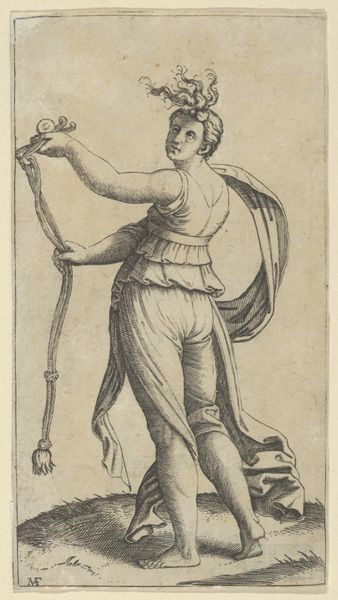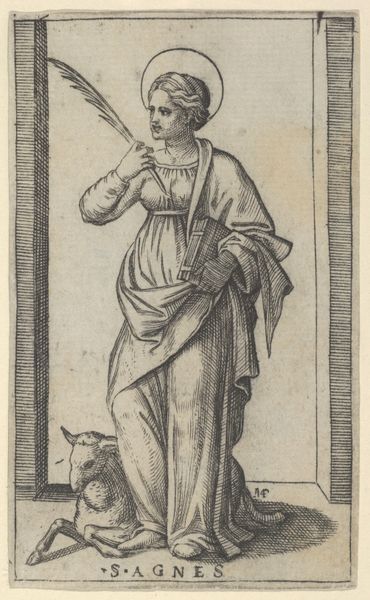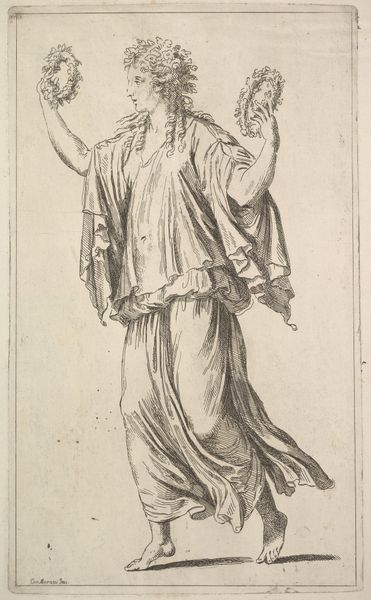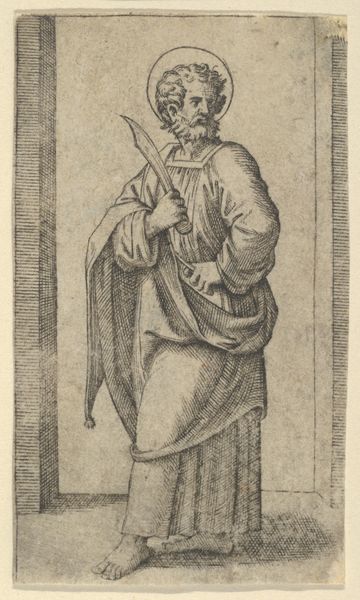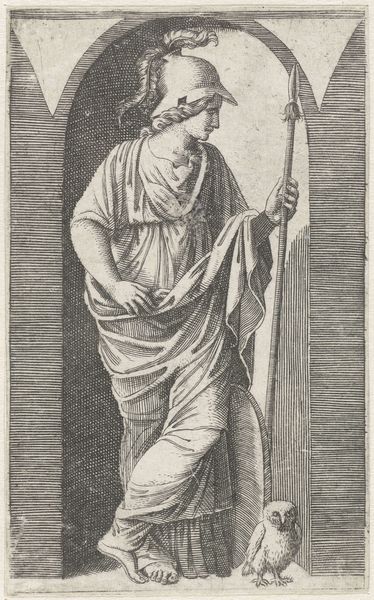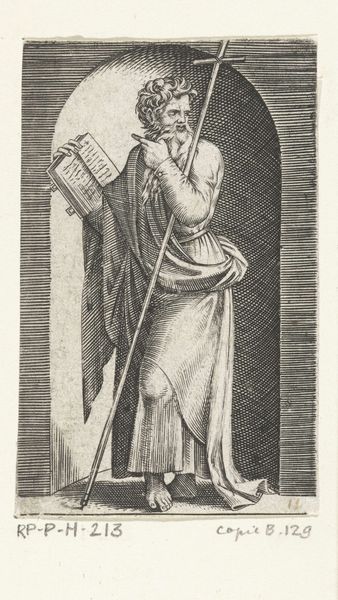
Saint Jude, holding a halberd in his right hand, from "Piccoli Santi" (Small Saints) 1495 - 1532
0:00
0:00
drawing, print, engraving
#
drawing
# print
#
figuration
#
history-painting
#
italian-renaissance
#
engraving
Dimensions: 3 1/4 x 1 15/16 in. (8.2 x 4.9 cm)
Copyright: Public Domain
Curator: Welcome. We're looking at "Saint Jude, holding a halberd in his right hand, from 'Piccoli Santi' (Small Saints)," an engraving by Marcantonio Raimondi, dating roughly from 1495 to 1532. Editor: The saint has a serene, almost detached expression. And the textures—the cross-hatching defining the folds of his robe, his hair—they're striking given the scale of this print. Curator: Raimondi was a master engraver. He popularized printmaking, reproducing works by artists like Raphael and profoundly impacting the dissemination of visual ideas. Think of this print, and others in the series, as part of an early visual culture industry. How does a craftsman like Raimondi shape artistic interpretation for wider audiences? Editor: The halberd stands out—not usually the first item we'd associate with sainthood. That choice definitely places him within a complex interplay of religious duty and military power dynamics of the Italian Renaissance. What messages are being sent? Is this image about the power structures maintained by the church, and saint Jude’s place within this framework? Curator: The print's small size, indicated by the "Small Saints" series title, makes it easily reproducible. Consider its accessibility, the implications for devotion. These prints facilitated a far-reaching personal connection to faith for a larger audience. The question of patronage is also critical. Editor: Definitely. We need to understand the patronage networks and their social and political leanings in order to fully grasp why this piece was created in the first place. And the fact that Saint Jude has become a figure particularly venerated by those facing desperate situations. It makes me consider the historical desperation experienced by people. Did images such as this provide tangible hope and even inspiration to mobilize during times of crises? Curator: Perhaps the affordability made Saint Jude relatable? Inexpensive devotional images allowed a more democratic experience of the divine. But remember also that the reproductive process itself influences meaning. An engraving interprets an original image—or multiple possible original images—for a different social function. It transforms the labor involved, and potentially who has access to that labor. Editor: It definitely invites multiple layers of understanding, considering class, labor, religion, and war! What does a halberd even *mean* in the hand of a Saint! Thank you, I feel as though I have a completely different view now than when we began! Curator: My pleasure, considering this print from its material existence allows an engagement beyond pure aesthetics. It makes us think critically about cultural exchange, technology and the art world.
Comments
No comments
Be the first to comment and join the conversation on the ultimate creative platform.
